Located in the Faculty of Medicine of the University of Valencia (UV) has a laboratory with a NMR (14T) for acquiring unique metabolic profiles of biofluids, cell lines and tissues. This Unit is coordinated by Dr. Ramón Martínez Máñez, PI of the Applied Molecular Chemistry Group of the Universidad Politécnica de Valencia, together with Dr. Salvador Gil, Director of the Central Service for Experimental Research (SCSIE). FOR THOSE SERVICES IDENTIFIED AS OUTSTANDING, AT LEAST 20% OF THEIR CAPACITY IS OPEN UNDER COMPETITIVE ACCESS. SEE ANNEX 1 OF ACCESS PROTOCOL FOR DETAILS ON % OF OPENNESS FOR EACH SERVICE
11 Dec Multimodal CMR/PET imaging reveals key differences in infarct evolution in mice. NANBIOSIS U26 contributed technical expertise and advanced imaging support. Valencia, December 2025 — A new scientific publication, “Characterization of Infarct Size and Remodeling Using CMR and PET in Mice Models of Reperfused and Non-Reperfused Myocardial Infarction” (Diagnostics, 2025), highlights the value of combining cardiovascular magnetic resonance (CMR) and positron emission tomography (PET) for non-invasive, longitudinal evaluation of heart damage in preclinical models of myocardial infarction. The study features the participation of NANBIOSIS Unit 26, which contributed both technical expertise and advanced imaging infrastructure. A multimodal approach to understanding Heart[...] 26 Nov Glucose-powered nanomotors developed by UPV researchers boost drug delivery deep inside solid tumors, showing strong efficacy in advanced preclinical models. Valencia, November 2025 — A research team from the Universitat Politècnica de València (UPV), part of the Interuniversity Institute for Molecular Recognition and Technological Development (IDM), has developed glucose-driven nanomotors capable of autonomously navigating solid tumors and delivering chemotherapy drugs more effectively. The work, validated in animal models and patient-derived samples, has been published in ACS Nano. The study involved researchers from IIS La Fe, CIBER-BBN, CIBERONC, INCLIVA, and the Príncipe Felipe Research Center (CIPF). Prof. Ramón Martínez-Mañez, Scientific Director[...] 04 Nov NANBIOSIS held its 2025 networking event in Cáceres to boost collaboration among Units in biomaterials, nanomedicine, and biomedical research. Cáceres, October 2025 — From 22 to 24 October 2025, the Singular Scientific and Technical Infrastructure (ICTS) NANBIOSIS held its annual internal networking event at the Centro de Cirugía de Mínima Invasión Jesús Usón (CCMIJU) in Cáceres, Spain. The event brought together Unit coordinators, researchers, and technical staff from across Spain to foster collaboration, share scientific progress, and explore new opportunities for joint projects in biomedical research, nanomedicine, and biotechnology. A meeting to boost collaboration across NANBIOSIS Units The three-day event[...] 16 Oct NANBIOSIS joins BIOSPAIN 2025 with ISCIII and CIBER, boosting biotech partnerships and showcasing early HTA and ARISTOS innovations. Barcelona, October 2025 — Last week NANBIOSIS took part in BIOSPAIN 2025 (Fira de Barcelona Montjuïc), joining forces at the ISCIII / CIBER stand to showcase our facilities and to deepen collaborations with industry partners, users and strategic allies. Over three intensive days the NANBIOSIS and CIBER representatives held multiple meetings with potential private partners and technology users to accelerate translation of nanomedicine and biomedical technologies. Record edition: numbers that matter BIOSPAIN 2025 closed as the largest edition to date: more than[...] 25 Jun First study using NANBIOSIS Unit 26 PET/MRI‑3T shows MSC-EVs reduce alcohol-induced brain damage and neuroinflammation in female mice. Valencia, Spain – The Spanish national infrastructure NANBIOSIS is celebrating a significant breakthrough: the first scientific article utilizing PET/MRI‑3T imaging services from Unit 26 has been published, showcasing a novel therapy against alcohol-induced brain damage in female mice. Study overview & key findings The article, titled “Role of miRNAs from mesenchymal stem cell‑derived extracellular vesicles in neuroinflammation and behavioral impairments induced by chronic alcohol consumption in female mice“, appeared online ahead of print in Neural Regeneration Research on June 19, 2025 . It demonstrates that repeated[...] 23 Jun Seminar on imaging and metabolomics platforms at UV, featuring NANBIOSIS equipment and recent biomedical research applications. Valencia, June 2025 — Researchers and clinicians interested in cutting-edge preclinical imaging and metabolomics technologies are invited to attend the upcoming seminar “Biomedical and Metabolomic Imaging Section: Equipment and Applications”, taking place on Friday, June 27, 2025, at 13:00, in Seminar Room D, Faculty of Medicine and Dentistry, Universitat de València. The seminar will be delivered by Mustafa Ezzeddin Ayoub (“Musta”), technical expert from the Biomedical and Metabolomic Imaging Section at the University Clinical Hospital of Valencia (UCIM). The session will provide a comprehensiv[...] 04 Apr NANBIOSIS joins CIBERES meeting to foster collaboration in nanomedicine and infectious disease research, showcasing capabilities and innovations. Zaragoza, march 2025. Last week, the CIBERES Infectious Diseases Program Meeting took place at the Centro de Investigación Biomédica de Aragón (CIBA), bringing together leading experts in respiratory infectious diseases to explore new research collaborations. The event featured presentations from various CIBER research areas, including CIBERINFEC, CIBERESP, and CIBER-BBN, highlighting potential synergies in tackling infectious diseases. NANBIOSIS Director Ramón Martínez Máñez introduced the nanomedicine research lines, emphasizing the support on biomedical innovation. Other key speakers included Roberto Hornero, who presented the Bioengineering researc[...] 13 Feb SmILE develops smart implants and digital health solutions to prevent and manage musculoskeletal diseases, enhancing patient care and independence. Lübeck, February 2025. The European project “SmILE” has been launched to provide innovative solutions for reducing the burden of musculoskeletal non-communicable diseases (MSK-NCDs) among the elderly through preventive measures and early interventions. Supported by the Horizon Europe programme and the Swiss State Secretariat for Education, Research and Innovation (SERI), this collaborative initiative brings together 25 institutions from 12 European countries with a budget of €19.9 million, plus an additional €760K from SERI, over five years. Addressing the Challenges of MSK-NCDs Wit[...]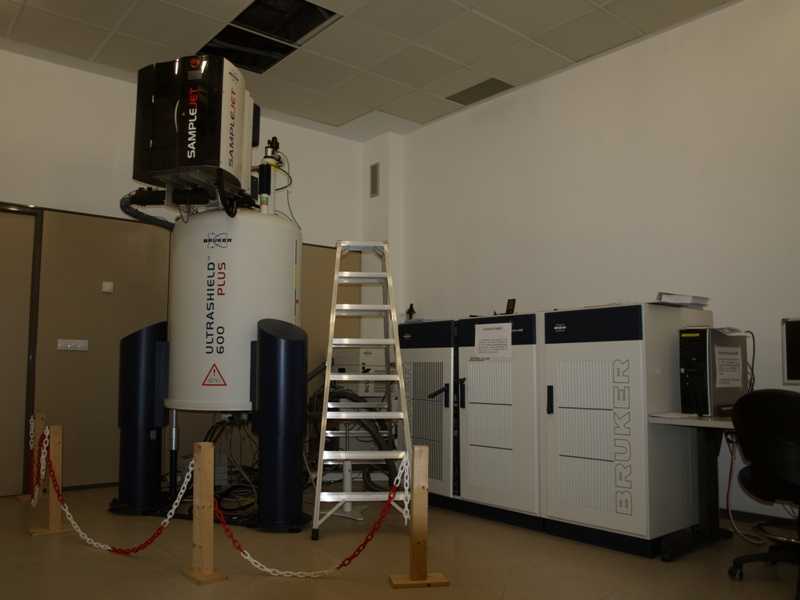

U26. NMR: Biomedical Applications II

Description
Services
Equipments
Active projects
Other projects
Ref
Title
Funding Organism
Unit Role
MAT2015-64139-C4-1-R
INTELLIGENT NANOMATERIALS, PROBES AND DEVICES FOR THE INTEGRATED DEVELOPMENT OF NEW TOOLS APPLIED TO THE BIOMEDICAL FIELD
MINISTERIO DE ECONOMIA INDUSTRIA Y COMPETITIVIDAD
Participant
MAT2015-64139-C4-C-R
CHROMOGENIC AND FLUOROGENIC CHEMOSENSES FOR THE DETECTION OF NEUROTRANSMITTERS
MINISTERIO DE ECONOMIA, INDUSTRIA Y COMPETITIVIDAD
Participant
PROMETEOII/2014/047
New approaches for the design of controlled release materials and the detection of dangerous compounds
Generalitat Valenciana
Participant
AP2012-1478
HELP CONV FPU 2012 - DE LA TORRE PAREDES, CRISTINA
Ministerio de Educacion, cultura y deporte
Participant
MAT2012-38429-C04-01
Development of functionalized materials with nanoscopic doors for controlled release applications and sensors for the detection of ammonium nitrate, sulfuric acid and CO
Ministerio de Economia y Competitividad
Participant
UPV-FE-16-A1
CONSTITUTION OF A SMART DRUG DISCOVERY PLATFORM
Participant
UPV-FE-15-A2
Development of nanomaterials and sensors for early and non-invasive diagnosis and prognosis
UNIVERSIDAD POLITECNICA DE VALENCIA
Participant
AP2013-06017
HELP CONTRACT FPU 2013-SANCHEZ CABEZAS
MInisterio de Educacion, Cultura y Deporte
Participant
Publications
News U26
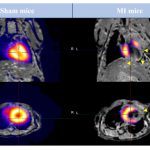
NANBIOSIS U26 Contributes to New Study Using CMR and PET to Track Myocardial Infarction Progression in Mice
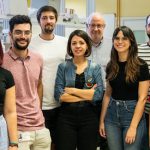
Glucose-Powered Nanomotors Achieve Deeper Drug Delivery in Solid Tumors
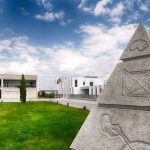
NANBIOSIS Strengthens Internal Collaboration at 2025 Networking Event in Cáceres
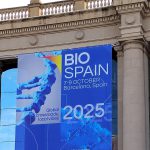
NANBIOSIS at BIOSPAIN 2025: Strengthening public-private bridges for translational nanomedicine
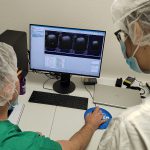
Researchers develop a promising therapy for alcohol‑induced brain injury thanks to NANBIOSIS services
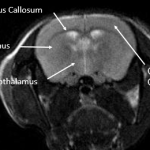
Discover the latest Biomedical Imaging and Metabolomics equipment at NANBIOSIS platforms
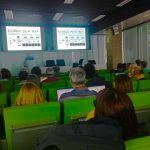
Showcase of Nanomedicine Research at CIBERES Infectious Diseases Meeting
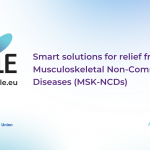
New European Project “SmILE” Aims to Revolutionize Musculoskeletal Disease Management
Tags: biomarker nanomedicine